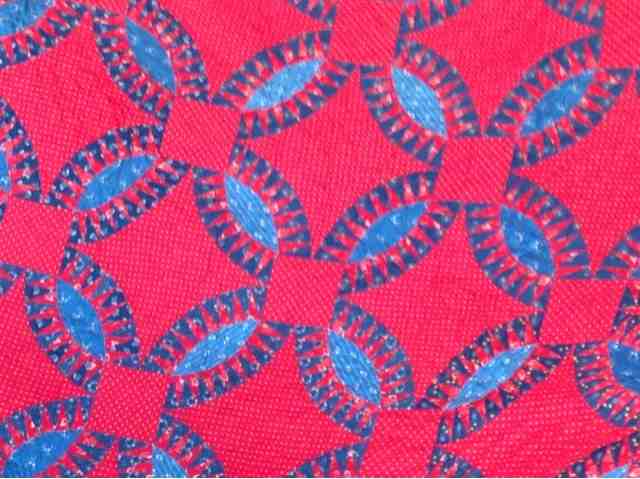This pattern called "pickle jar" is pretty intricate and the colors are so vibrant. Hard to believe that this incredible quilt dates back to 1910!
This 1932 "bluework" quilt is exquisite. The patterns were so different from anything I've seen from that era. The part I was most surprised with was how the quilter used a dense field of French Knots to create the filling/dark shading of the cross.
Here is part of the area filled with French Knots.
Here's a close-up of some of the incredible embroidered blocks.
This log cabin block quilt from 1865 is particularly unique because it's a two-sided quilt... quite unusual for that time period.
Here's the back side of the log cabin quilt.
This incredible piece has feathered triangles and appliquéd flowers and leaves as a large wide border. It's in pristine condition... for a quilt that will be celebrating two centuries in a few decades. It was made in the 1840s.
Here's another piece from the 1840's. What makes this quilt special is that it is a very early example for broderie perce. This technique is done by cutting out a part of a printed fabric and appliquéing it onto a background, such as the center piece you see here. The fabric was also used to make the large diamond shape border around the quilt.
The full 1840 broderie perce quilt.
A wonderful and unique example of redwork from the 1890's.
Hope you enjoy this step back in history. It's amazing to see what was done so many years ago... how women expressed their artistic selves, even when it wasn't considered art.
I'm staying up on Whidbey Island for the rest of the week, while I attend my first session of the Level Two series in hand and machine stitch and design at the Gail Harker Center for Creative Arts. I'll do my best to keep up with what all I'm working on this week,














Thanks for sharing these! They really are fantastic. I *did* enjoy this post quite a bit. :)
ReplyDeleteSo lovely! :)
ReplyDeleteGreetings from Finland!
Hugs, Ulla